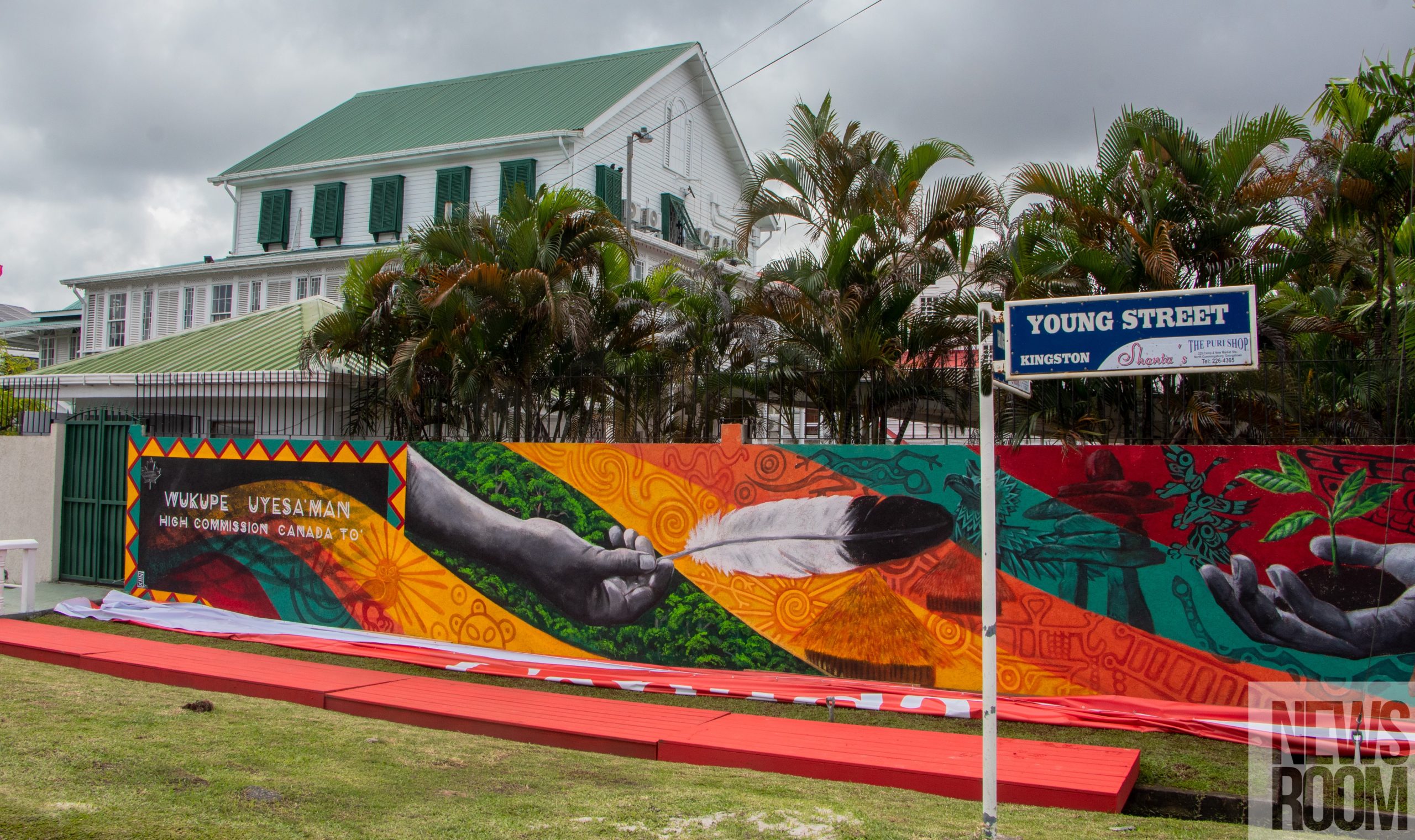
 </p>
<p>” data-medium-file=”https://newsroom.gy/wp-content/uploads/2021/11/Mural2-300×158.jpg” data-large-file=”https://newsroom.gy/wp-content/uploads/2021/11/Mural2-1024×539.jpg” loading=”lazy” class=”size-full wp-image-127724″ src=”https://newsroom.gy/wp-content/uploads/2021/11/Mural2-scaled.jpg” alt=”” width=”2560″ height=”1348″ /><figcaption id=) A host of dignitaries joined the artists to celebrate the indigenous mural (Photo: News Room/ November 16, 2021)
A host of dignitaries joined the artists to celebrate the indigenous mural (Photo: News Room/ November 16, 2021)
And Walrond further posited, “Affording our indigenous people this place of prominence in our local cultural landscape through initiatives such as this is long overdue.
“… it is nothing more than that which our first people are entitled to as a matter of right.”
Why this is such an important consideration, she explained, is because indigenous people in Guyana and Canada have historically been marginalised due to the experience of colonial rule and entrenched inequalities.
This was acknowledged by Canadian High Commissioner Mark Berman. According to him, Canada is still attempting to reflect on its past with the injustices meted out to their indigenous people, while striving towards greeted inclusion and even, reconciliation.
“We acknowledge that Canada has historically denied the rights of indigenous peoples through assimilationist policies and practices.
“Be it at home or abroad, we believe that reckoning with human rights violations and abuses, engaging in meaningful dialogue and working together as partners are foundational to creating more inclusive societies where all can fully enjoy their human rights,” Berman stated.
And for him, the mural is a way of using art to make connections with the indigenous culture and people, while affording indigenous people with the respect they deserve.
Meanwhile, the Minister of Amerindian Affairs Pauline Campbell- Sukhai emphasised that it is important for people to be reminded of the indigenous people’s culture, identity and way of life.
But it is not only that people should be occasionally reminded of this. Campbell- Sukhai noted that “calculated and specific” actions must be taken to ensure that the indigenous culture is preserved.
And that, she said, can be done through actions like creating this mural.

